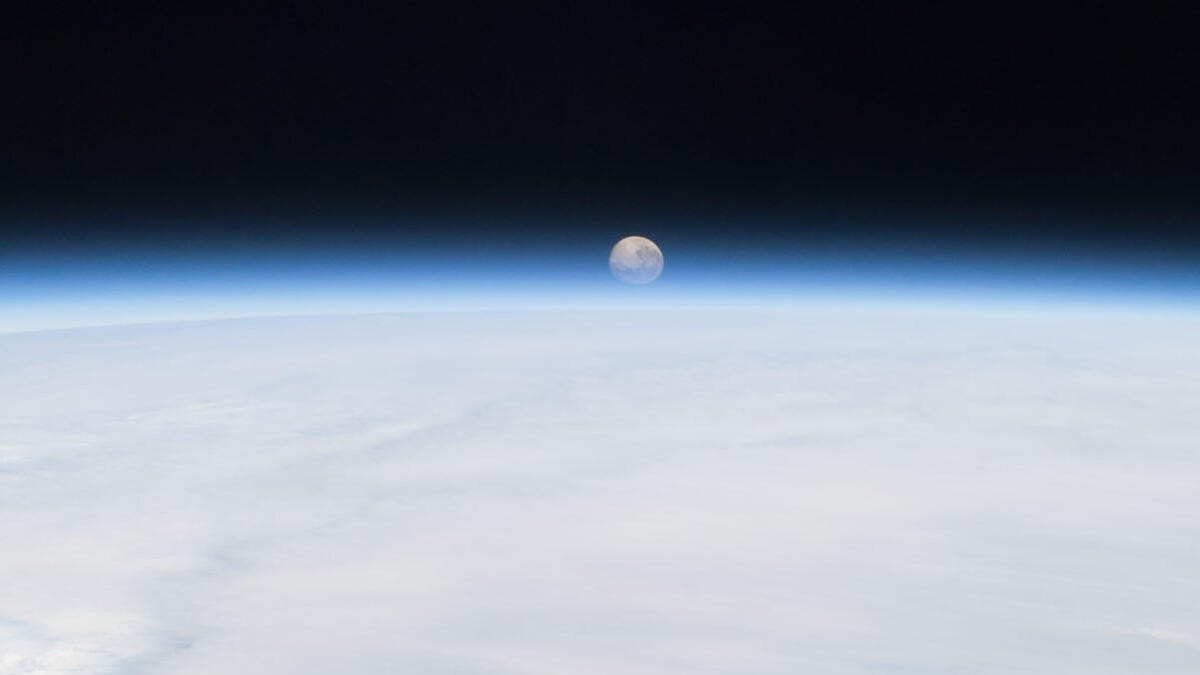Earth's new 'mini-moon' is probably just space junk from old NASA mission
That's no moon -- no, seriously, it's probably a rocket from NASA's Surveyor missions.

Does Earth have its second mini-moon discovery in 2020? Unlikely.
Earth has one huge moon looming overhead, and you might think "That's enough moons" for us. But sometimes, wandering asteroids get a little too close to the planet and the Earth gets greedy. Its gravitational pull captures the space rocks and keeps them within its orbit -- collecting the cosmic marbles for months or years at a time.
The brief visitations by these "mini-moons" are fairly rare, with only two asteroids confirmed so far. The most recent came on Feb. 15, when tiny rock 2020 CD3 was discovered by astronomers at the NASA-funded Catalina Sky Survey. The glorious mini-moon had been ensnared by the Earth's gravity as early as 2015 and stayed with us until May 2020 before dashing off into the cosmos again.
But in the unprecedented year of 2020, astronomers have announced the detection of another potential mini-moon: 2020 SO.
Except this one isn't acting at all like a small asteroid would. Our mini-moon is no moon at all. It's moving far too slowly for it to be rock ejected from a cosmic body. Therefore, astronomers reason, it's probably just space junk left over from the early days of the Space Race.
The current theory, proposed by astronomers and skywatchers since the object was first detected, holds that 2020 SO is the rocket body from an Atlas Centaur-D rocket originally launched in 1966. That rocket lifted off Sept. 20 carrying the Surveyor 2 lunar lander to the moon. The dimensions and the orbit of 2020 SO, published by NASA's Jet Propulsion Laboratory, seem to align neatly with the Centaur body.
On Sunday, NASA's Paul Chodas, director of the Center for Near-Earth Object Studies, told the Associated Press that the near-circular orbit around the sun is a little too similar to Earth's for it to be a chunk of rock.
Chat on MPML suggests Earth's potential new minimoon, 2020 SO may be the Surveyor 2 Centaur rocket body, launched in September 1966. Integrating backwards shows 2020 SO2 to also be orbiting Earth in September 1966.@renerpho , @nrco0e
— Tony Dunn (@tony873004) September 21, 2020
https://t.co/tHjv0pqv3Y pic.twitter.com/7LJsF9PD2K
The object was grabbed by Earth in October and will have its closest approach on Dec. 1, getting to within around 31,000 miles of the planet. Astronomers should be able to get a closer look at the object then, assessing its shape and the kind of light its emitting to provide a definitive answer.
If it is the Centaur stage -- if it is junk -- it's still interesting junk. It's been out, wandering the solar system for over five decades. We might be able to learn a little about the effects of space on our old rocket bodies. And while it's not going to cause any problems for Earthlings, as far as we can tell, it does serve as a timely reminder of the space junk issue.
Since we first began launching rockets and satellites into orbit, we've been polluting space around our planet. Not everything that goes up immediately comes down. There are thousands of pieces of space junk, defunct satellites and tiny chunks of garbage, circling the Earth at great speeds. A collision with a piece of junk could be devastating, blowing a hole right through a rocket or satellite. More launches mean more junk and more junk poses a much bigger risk to spaceflight, satellites and our desire to occupy space.
You don't even have to look back more than a few weeks to see how potential issues space debris poses. On Sept. 23, the International Space Station had to make a "maneuver burn" to avoid an unknown piece of cosmic trash hurtling toward it.

